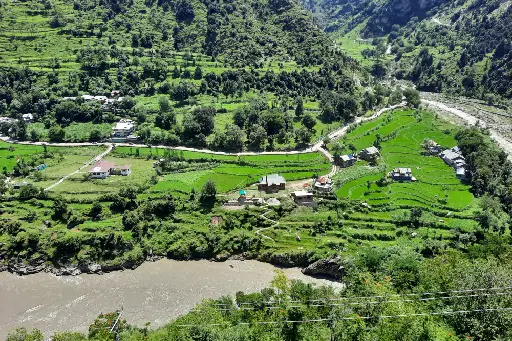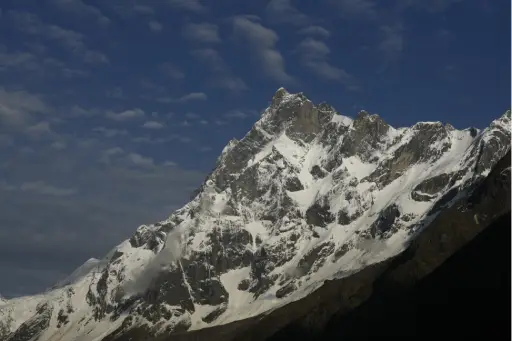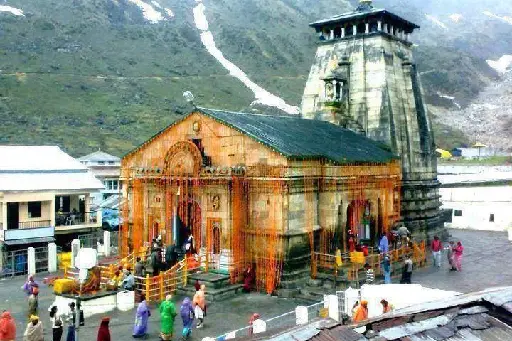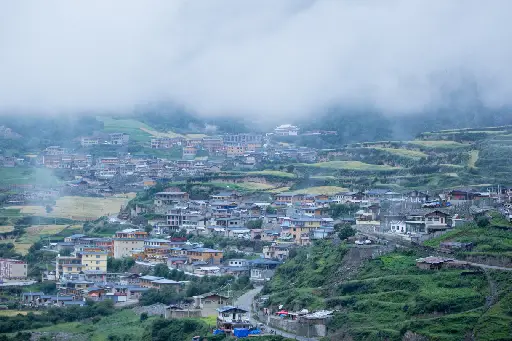Badrinath Weather Guide: What to Expect During Different Seasons
Introduction:
Badrinath, one of the holiest destinations in India, is not only revered for its spiritual significance but also for its mesmerizing natural beauty. Nestled in the Garhwal Himalayas, this divine place offers a unique experience throughout the year, with varying weather conditions influencing travel plans. If you are planning a visit to this sacred town, understanding the weather conditions can help you plan the perfect trip. This Badrinath Weather Guide will cover what to expect in different seasons and how to make the most of your trip with the right Badrinath Yatra Package.

Summer Season in Badrinath (April to June)
Temperature: 10°C to 15°C
The summer months, from April to June, are the best time to visit Badrinath. During this period, the weather is pleasant, with cool mornings and evenings, making it perfect for pilgrimage and sightseeing. The temple doors open in late April or early May, and the entire region comes alive with pilgrims and tourists alike.
What to Expect:
- Comfortable temperatures for travel and temple visits.
- Scenic beauty as the snow begins to melt, revealing lush greenery and blooming flowers.
- Crowds are more manageable compared to peak months.
Travel Tip: Book your Badrinath Tour Package in advance, as the summer season attracts many devotees, especially in May and June.
Monsoon Season in Badrinath (July to September)
Temperature: 8°C to 12°C
Monsoon in Badrinath, from July to September, is a time of heavy rainfall. The region receives a substantial amount of rain, which can sometimes lead to landslides and roadblocks. While the landscape becomes even more vibrant and lush, travel during this season is challenging due to the unpredictable weather.
What to Expect:
- Frequent rainfall and cloudy skies, limiting visibility and outdoor activities.
- Potential disruptions in travel due to landslides and slippery roads.
- A quiet, serene atmosphere as fewer tourists visit during the monsoon.
Travel Tip: If you plan to visit Badrinath during the monsoon, opt for a reliable Badrinath Yatra Package that includes weather updates and safety measures.
Autumn Season in Badrinath (September to November)
Temperature: 5°C to 10°C
The autumn season, especially in September and October, is an excellent time to visit Badrinath. After the monsoon, the skies clear up, offering breathtaking views of the snow-capped Himalayan peaks. The weather is cool, and the crowds thin out, making it a peaceful time for a spiritual journey.
What to Expect:
- Clear skies and stunning panoramic views of the surrounding mountains.
- Mild, pleasant weather perfect for outdoor activities and temple visits.
- The vibrant natural beauty of the region at its peak.
Travel Tip: Autumn is ideal for those seeking a serene experience. Opt for a Badrinath Tour Package that includes nearby trekking options like Vasudhara Falls or Mana Village.
Winter Season in Badrinath (November to March)
Temperature: 5°C to 5°C
Winters in Badrinath are extremely harsh, with heavy snowfall and freezing temperatures. The temple closes in November for six months, and the region becomes largely inaccessible due to the snow-covered roads. However, if you're an adventure enthusiast and willing to brave the cold, the winter months offer stunning snow-clad landscapes.
What to Expect:
- Sub-zero temperatures and frequent snowfall.
- Closed temples and most hotels, making it a challenging season for tourists.
- Stunning snow-covered scenery for those willing to venture during the off-season.
Travel Tip: While the temple remains closed, you can visit Joshimath, where the idol of Badrinath is worshipped during winter. Make sure to check availability with your Badrinath Yatra Package provider for safe travel options.
Best Time to Visit Badrinath
The best time to visit Badrinath is from May to October, with the summer and autumn seasons offering the most favorable weather conditions. While summer is ideal for families and general tourists, autumn is perfect for those seeking a quieter, more spiritual experience. The temple closes for winter in late October or early November, so plan accordingly.
Packing Tips for Your Badrinath Trip
- Summer: Light woolens for the cool mornings and evenings.
- Monsoon: Rain gear, waterproof shoes, and quick-dry clothing.
- Autumn: Warm woolens for the cooler temperatures, especially at night.
- Winter: Heavy woolens, thermal wear, and snow gear if you're visiting nearby areas like Joshimath.
Choosing the Right Badrinath Yatra Package
When planning your trip to Badrinath, it's essential to select a Badrinath Yatra Package or Badrinath Tour Package that suits your travel preferences. Whether you're visiting with family, seeking a spiritual retreat, or looking for an adventure, a well-organized tour package will ensure that your trip is comfortable and hassle-free. Consider factors like travel routes, accommodation, and guided tours to make the most of your pilgrimage.
Conclusion:
Badrinath offers a unique experience in every season, and understanding the weather patterns can significantly enhance your travel experience. Whether you're planning to visit in the pleasant summer, the serene autumn, or even the challenging monsoon, there's always something magical to witness in this sacred land. To ensure a seamless experience, opt for a reliable Badrinath Tour Package that takes care of all the details for you. For a trustworthy and well-organized pilgrimage experience, choose Tours Club India , your reliable travel partner for all your Badrinath Yatra needs.































































